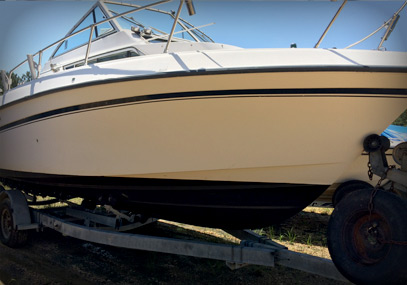Boats that spend long durations of time in the water are subjected to the colonization of micro-organisms that can accumlate on the hull.
These microorganisms can be in the form of barnacles or mussels, however there are a host of other organisms that can affect a boat below the waterline. This includes algae, grass, snails, worms and other living organisms. The extent of accumulation can also be affected by factors such as water temperature or salinity levels. Known as "fouling", this accumlation can hinder a vessel's ability to manuever, reduce fuel efficiency, and affect the life of the hull, prop, or outdrive.
The application of antifouling paint is a proven and effective measure of preventing micro-organisms from attaching themselves to the hull of your boat.

Antifouling paint contains biocides that repel fouling organisms. The most common types of biocides are copper compounds such as cuprous oxide or metallic copper.